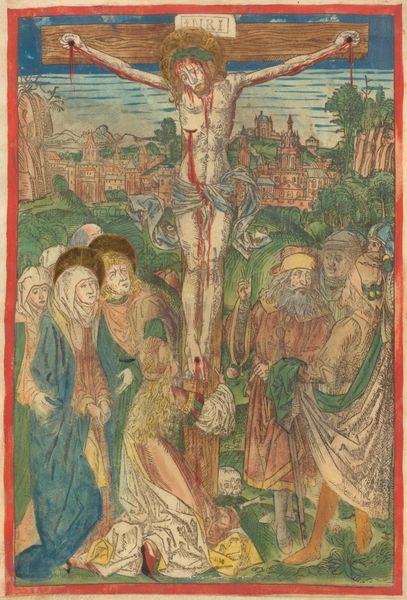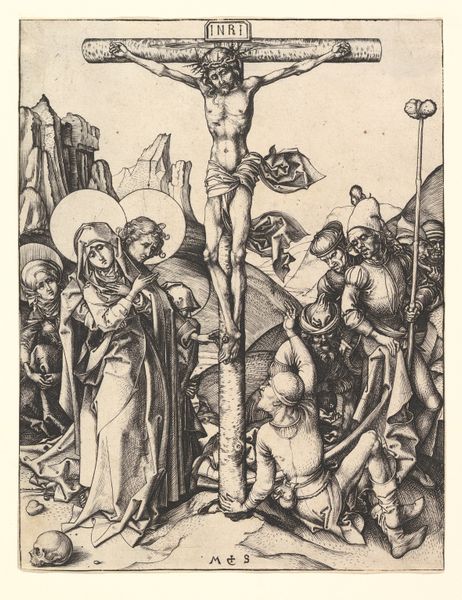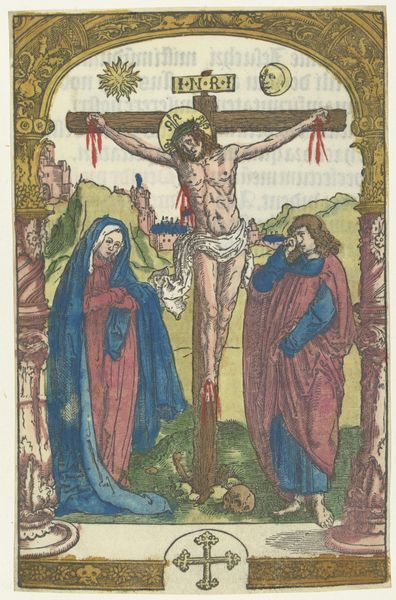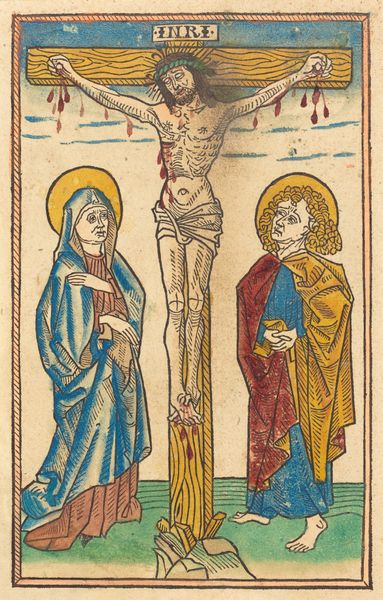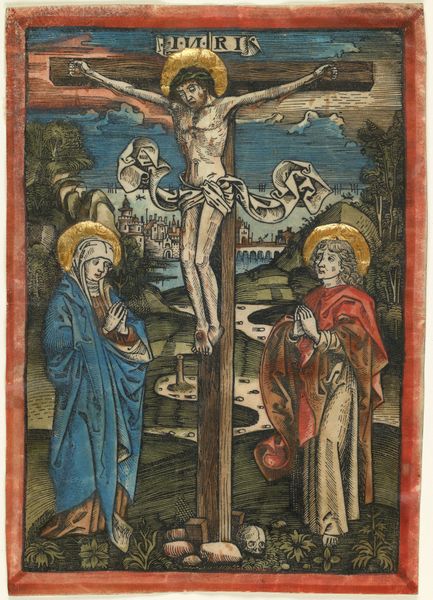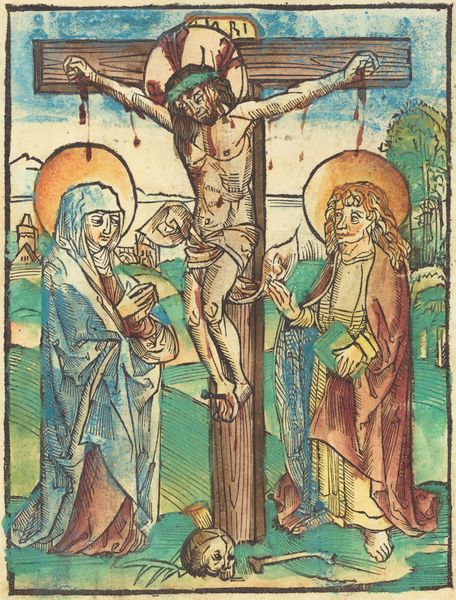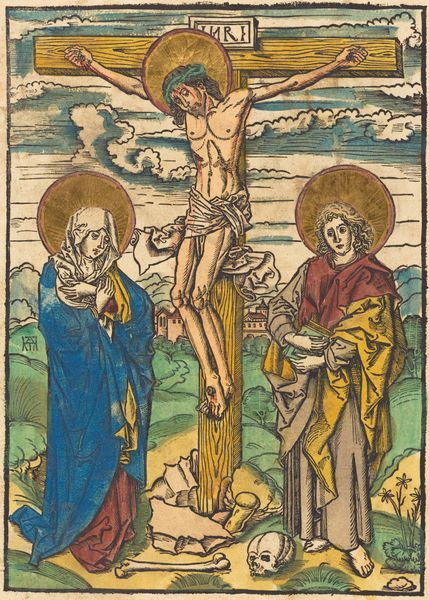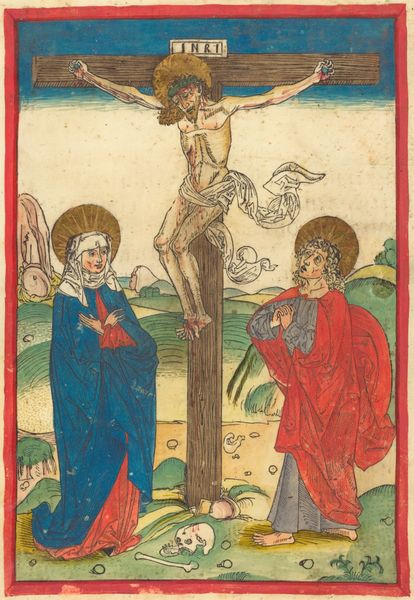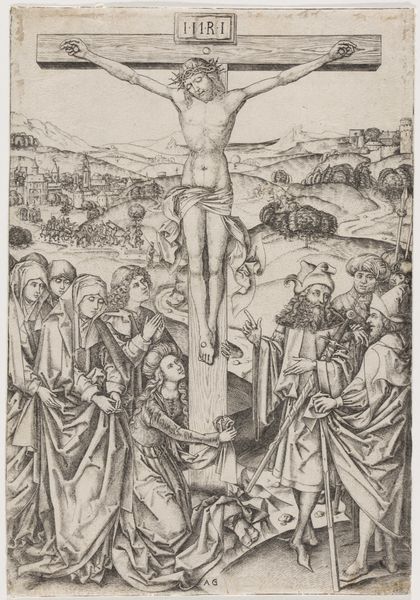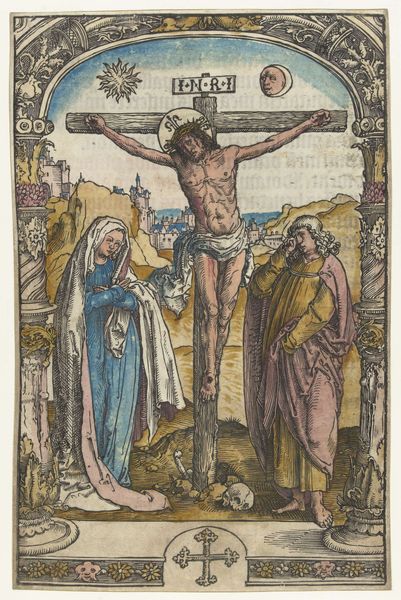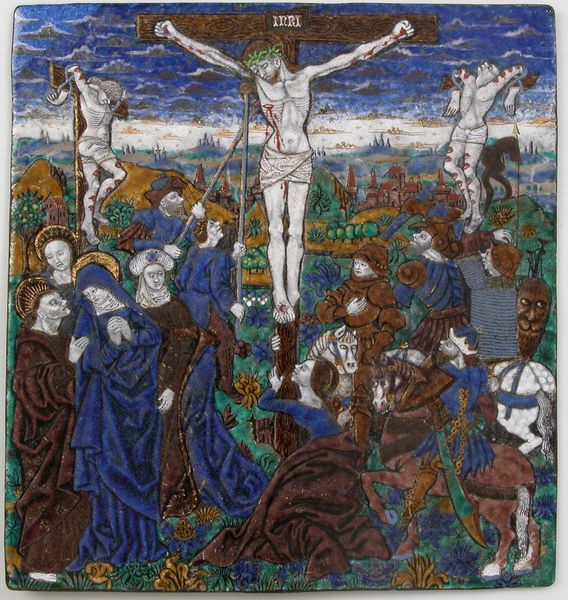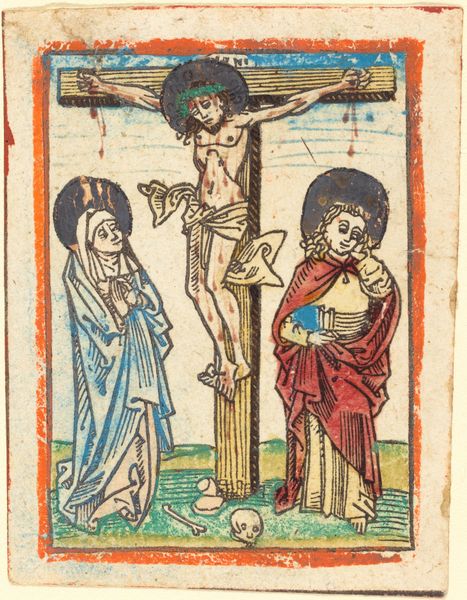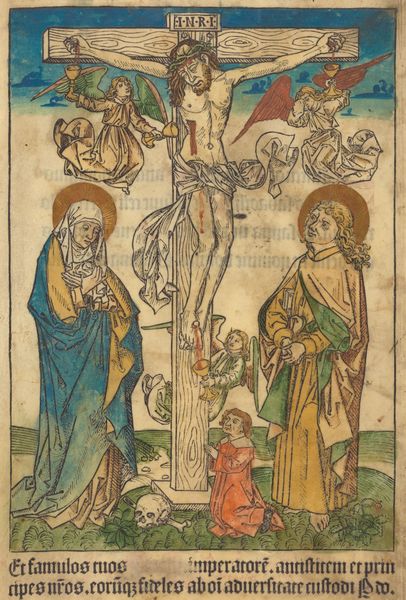
tempera, print, woodcut
#
portrait
#
narrative-art
#
tempera
# print
#
landscape
#
figuration
#
woodcut
#
history-painting
#
northern-renaissance
Copyright: National Gallery of Art: CC0 1.0
Curator: Standing before us is a woodcut crafted around 1490 by Michael Wolgemut, entitled "The Crucifixion with Saint Mary Magdalene." Notice the vibrant use of color in this piece. Editor: You know, the first thing that strikes me is how much life is teeming *around* the central figure. The landscape is practically festive compared to the subject. I get a slightly unsettling cognitive dissonance from that contrast. Curator: Precisely. This vibrant background, painted with tempera, provides a spatial and narrative context to the passion. Consider, for instance, the city in the background: a seemingly normal life going on, oblivious. This heightens the immediacy of Christ’s suffering. Editor: Yeah, it is a bizarre sort of tableau. Like a puppet show performing the grimmest tale in front of a very idyllic backdrop. Almost absurd, I'd say. Look at Mary Magdalene, embracing the cross, while those well-dressed observers off to the right seem rather detached, don't they? They might be discussing the price of grain. Curator: A pointed observation. It raises questions about the role of the viewer, both then and now. The composition directs our gaze not just to the suffering Christ but to the witnessing figures. Editor: Exactly! And the art style really emphasizes the message. The rigid lines and bold colors almost amplify the emotional impact, especially when they outline something so awful. This is not a soothing artwork, for sure. It pokes, it prods, it’s even got a slightly mocking tone if you look hard enough! Curator: The use of woodcut as a medium is crucial here too, its accessible nature allowed the distribution of such religious images far and wide, disseminating its powerful message. And it really accentuates that Northern Renaissance style we talked about, its flatness of perspective and clear symbolic elements, rather than seeking photographic realism. Editor: Well said. It makes you think about the choices we make every day—to ignore suffering, to get involved, or to find the absurd in the face of the tragic. It all plays out in the art—we cannot overlook those townspeople while observing Christ's suffering. That’s the genius. Curator: Indeed, the layers within the art provoke a deeper rumination. Editor: Yes. Thanks, Michael, for twisting my guts today, really appreciate it.
Comments
No comments
Be the first to comment and join the conversation on the ultimate creative platform.
